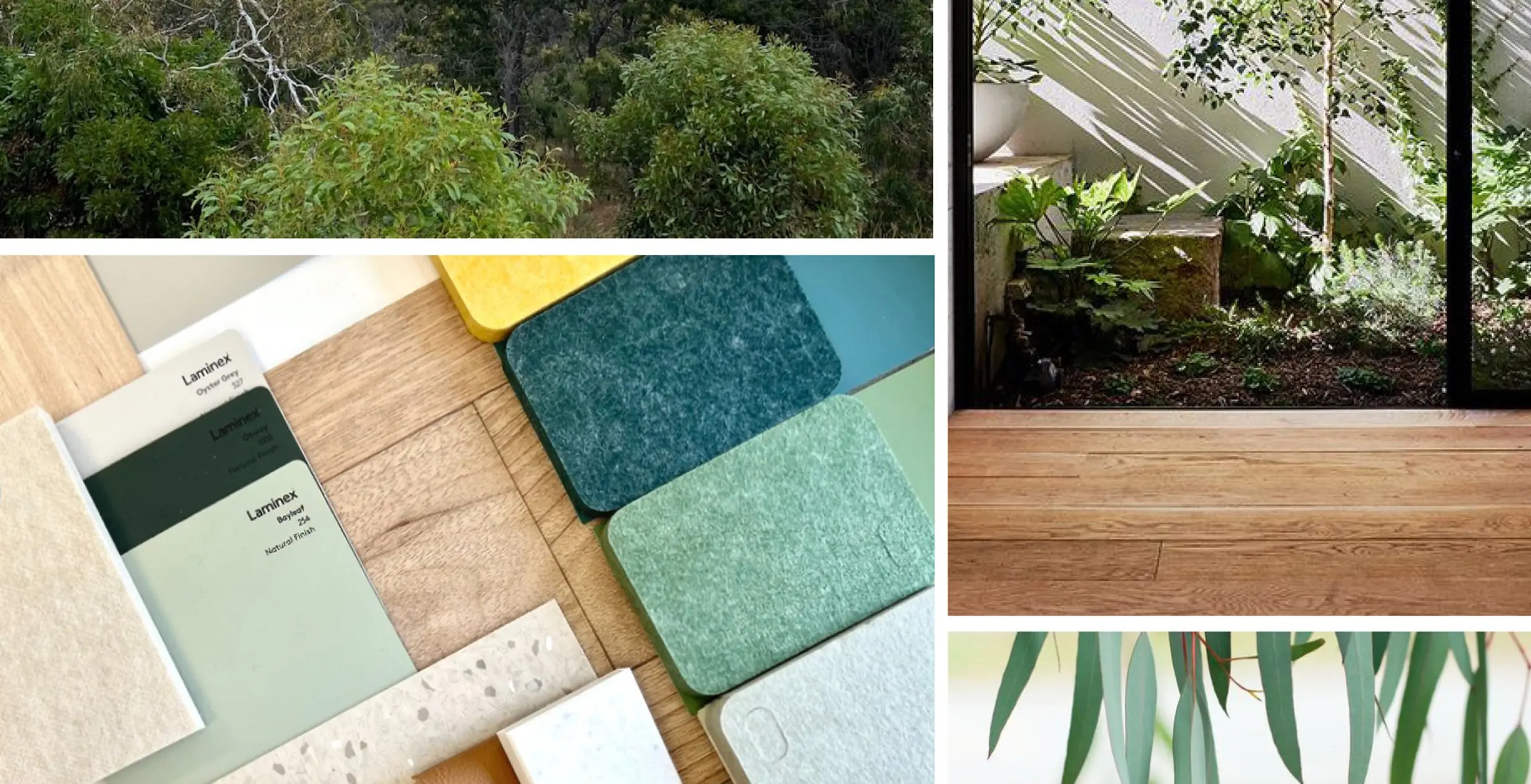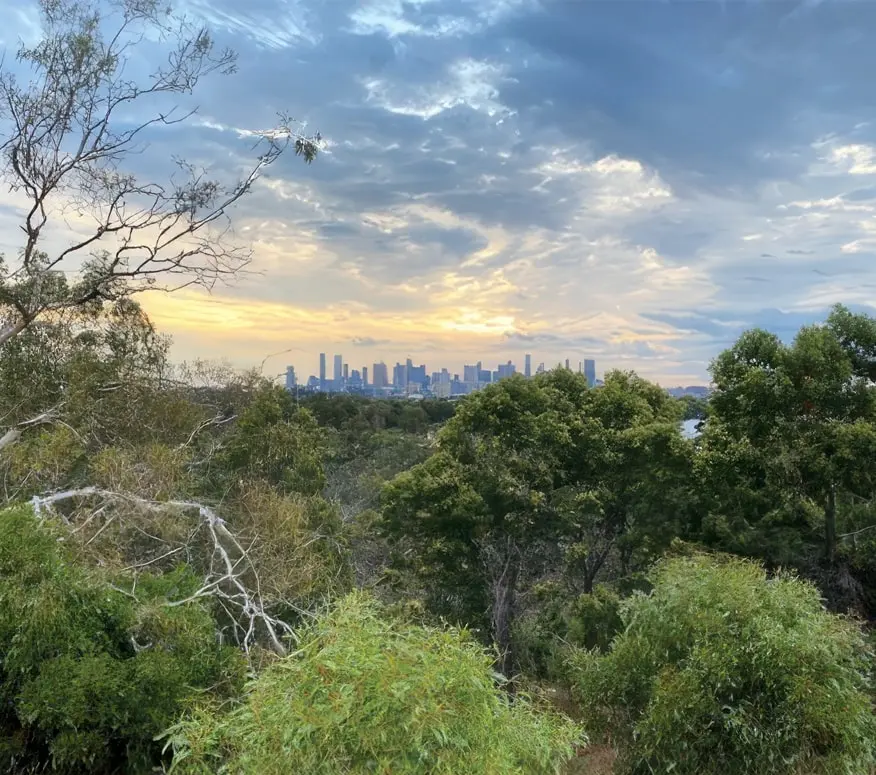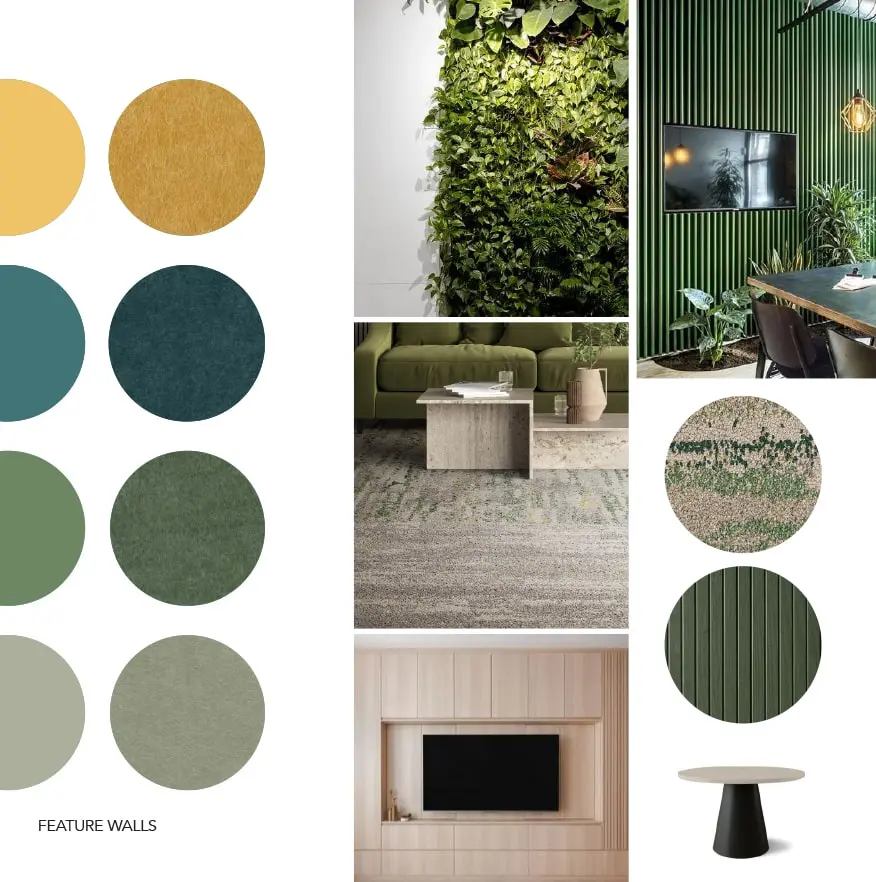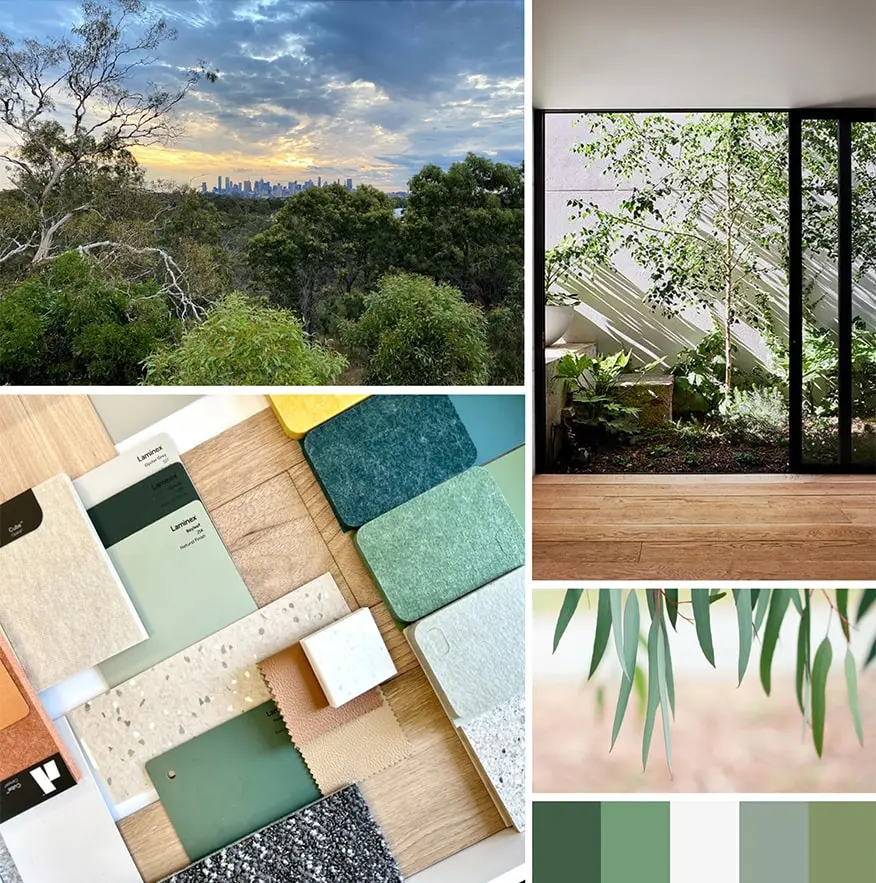
With our environment affecting both our psychological and physiological wellbeing, interior design plays a crucial role in mental health projects.
Thoughtfully designed hospital environments can facilitate healing, reduce stress, and improve patient outcomes by incorporating elements such as natural lighting, soothing colour palettes, biophilic design, and ergonomic layouts. By creating spaces that prioritise comfort and functionality, interior designers enhance the patient experience and support the efficiency of healthcare professionals.
One of our most recent mental health projects was $516 million Thomas Embling Hospital Upgrade. With structural works now complete and fit-out works commencing, we thought it an opportune time to reflect on the inspiration behind the interior concept design.
The inspiration behind the interior design
One of the most exciting times in a project is getting to start with a blank canvas. It piques our team’s creativity, and the studio quickly turns into a busy hive of activity as ideas, research and expertise combine and the project starts to take shape.
According to Senior Interior Designer, Melissa Petkovski, it all starts with ‘design thinking’. “Design thinking is essential and key to the success of any project. It helps our team build a strong design foundation that is meaningful, inspirational, and tailored to the specific users and their needs.”

Upon going through this process for the Thomas Embling Hospital Expansion project, our Interiors team decided to take inspiration from the views at the nearby Wurundjeri Spur Lookout that captures glimpses of the Melbourne city skyline through the frame of nature.

At GB-A we believe that drawing inspiration from the natural landscape can transform projects, infusing spaces with tranquillity and authenticity, a critical combination in mental health design. By incorporating elements such as the serene hues of a sunset and the rich textures of bushland, our designers can create environments that resonate with the surrounding landscape creating a more cohesive design outcome.
How the concept was brought to life
Natural light, raw materials like timber, and a palette that mirrors nature’s changing colours helped us bring the outside in, offering a seamless blend of beauty and comfort with the benefits of fostering a deep sense of connection to the world around us.
On the Thomas Embling Hospital Expansion we implemented the following design elements to bring the vision to life:
- Muted canvas with neutral and “earthy’’ based colour selections, acting as a subtle canvas receiving feature colours picked up directly from the site vegetation features.
- Materiality that shows depth in visual texture, earthiness in tone, robustness in form (Biophilic choices).
- The sky featuring deep blue and bright yellows is reflected in Building D upper levels feature colours.
- Greens taken from the mature eucalyptus trees in the site, starting with muted light greens on ground floor, moving into medium greens on Level 1. Hues taken from the sky in the form of deep blues to Level 2 and bright yellows to Level 3.
- Timber reference in joinery, floor finish, and graphic opportunities to pick up on the natural surroundings.
- Visual texture in floor finishes was used in more common and high traffic zones.
- Muted and neutral colour palette with little to no accent colour was used in the built form (floors, walls & ceilings) with artwork selection, FFE finishes, feature wall panelling and wayfinding utilising colour input within interior spaces.

Bringing nature in through biophilic design
Biophilic design, which incorporates natural elements into interior spaces, plays a crucial role in enhancing the health sector, particularly in mental health. By integrating components such as natural light, greenery, and organic materials, healthcare facilities can significantly improve patient outcomes and staff wellbeing.
Many studies have shown that environments resembling nature can reduce stress, lower blood pressure, enhance overall mood, and even accelerate recovery rates, fostering a more positive atmosphere. Biophilic design has also been known to increase productivity and job satisfaction for healthcare workers by creating a more calming workplace.

Biophilic design principles were applied to the interior design in the following ways:
- Courtyards design and connection with indoors
- Impeded nature views
- Lobby green walls
- Circadian, diffuse, accent lighting
- Natural Finishes
- Internal planning, unimpeded views over a distance
- Organic Floor/Ceiling Finishes Inlay Forms
- Organic Joinery Design, wayfinding and wall finishes patterns
Designing Greener Better interiors
UP NEXT






























